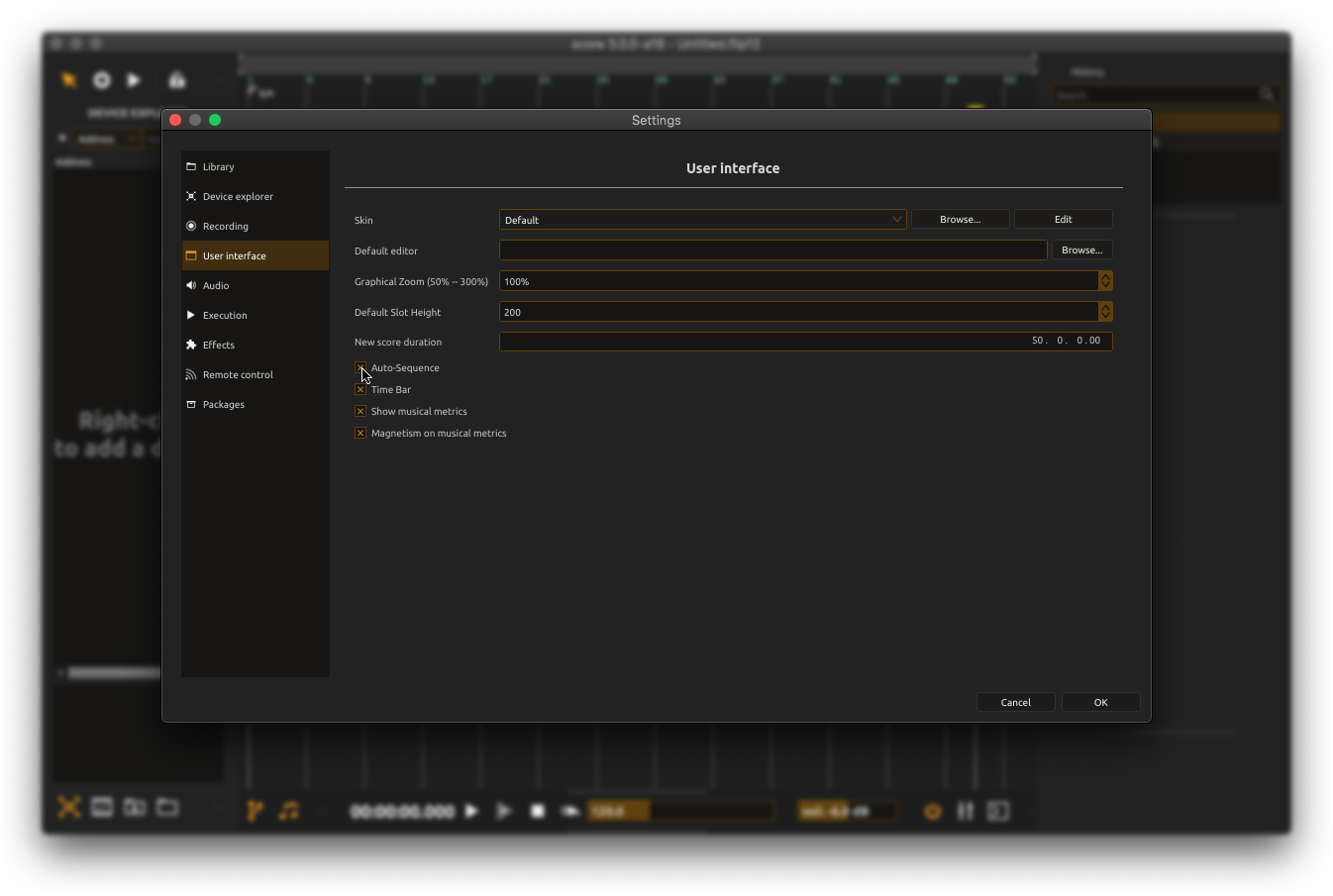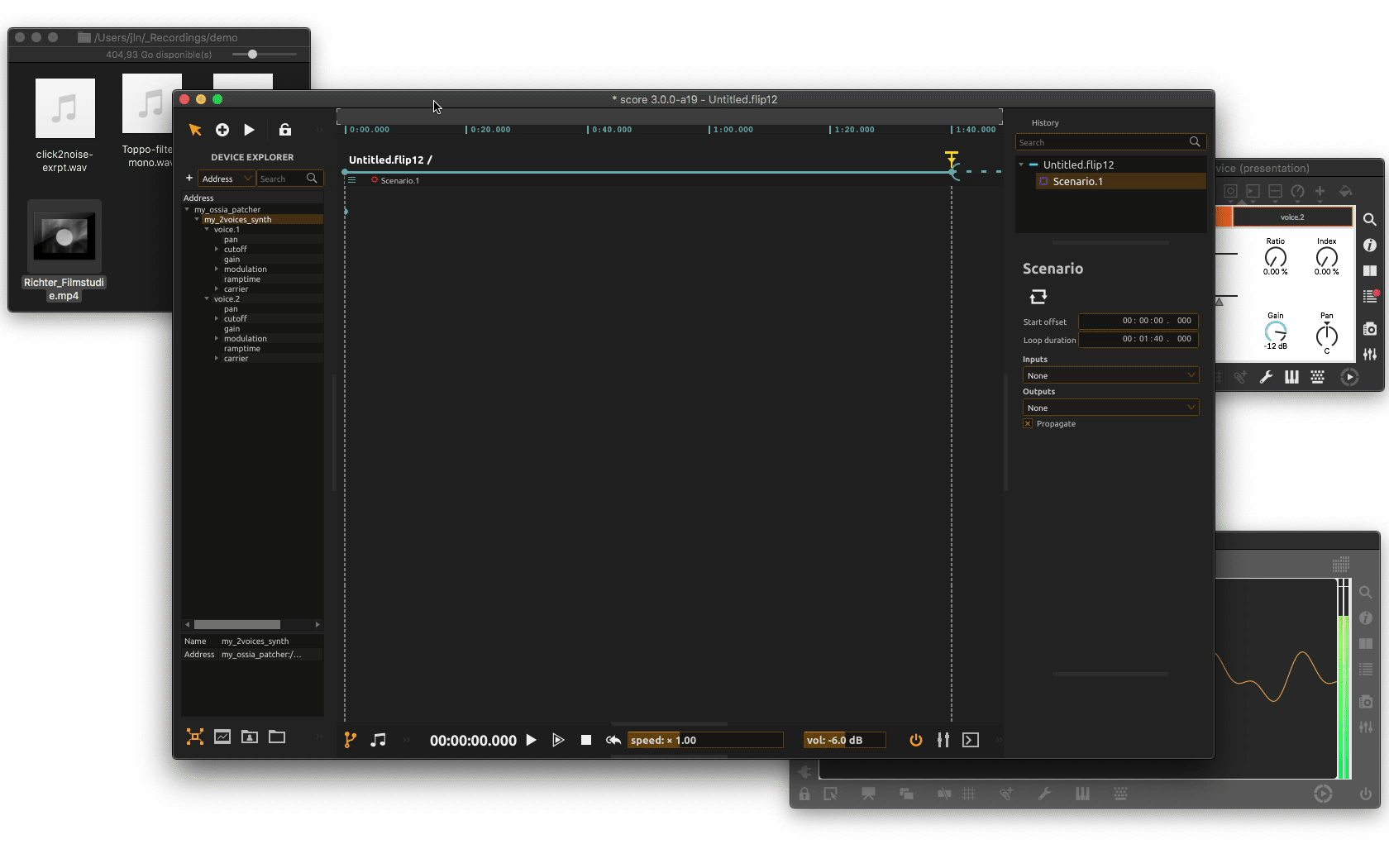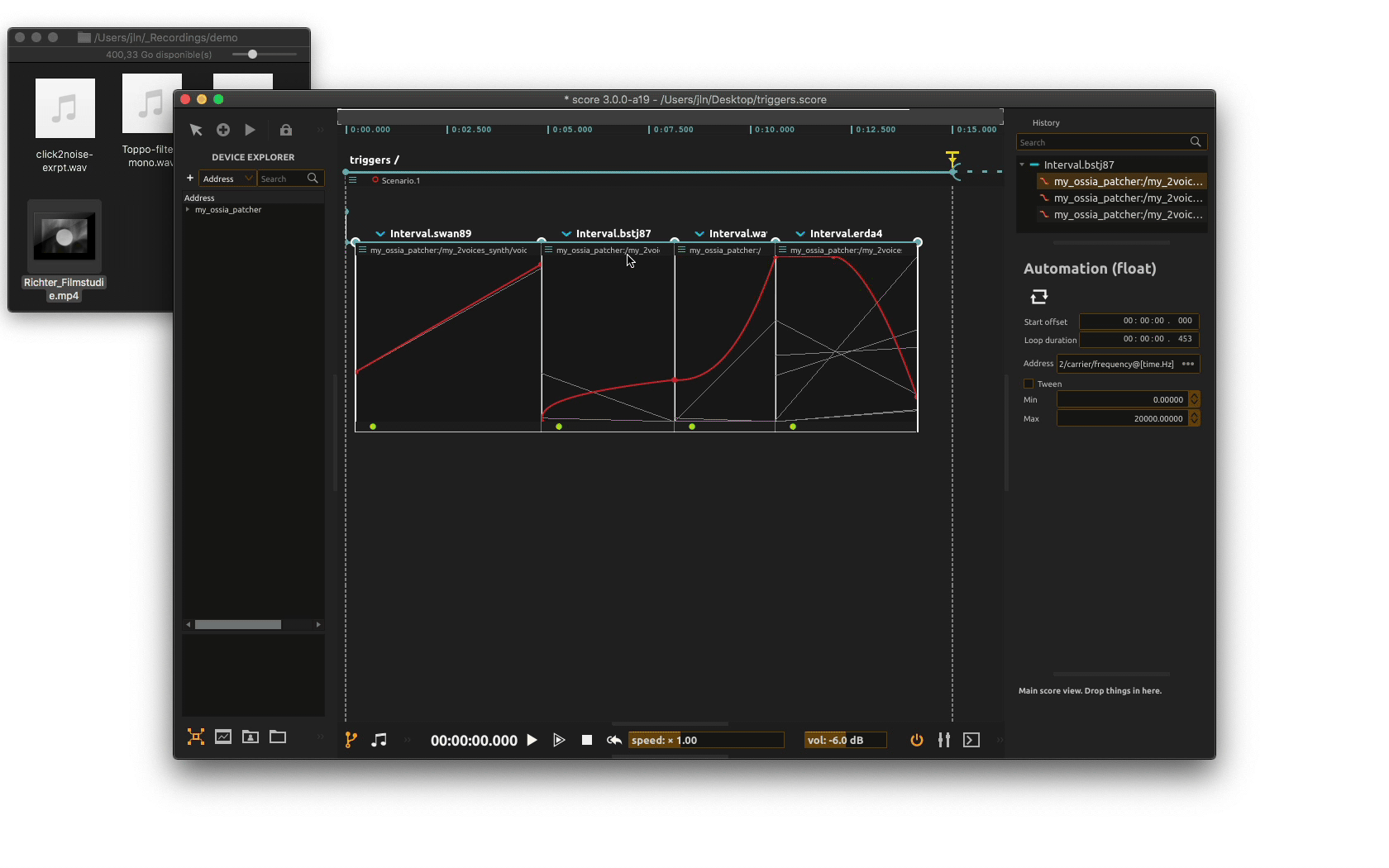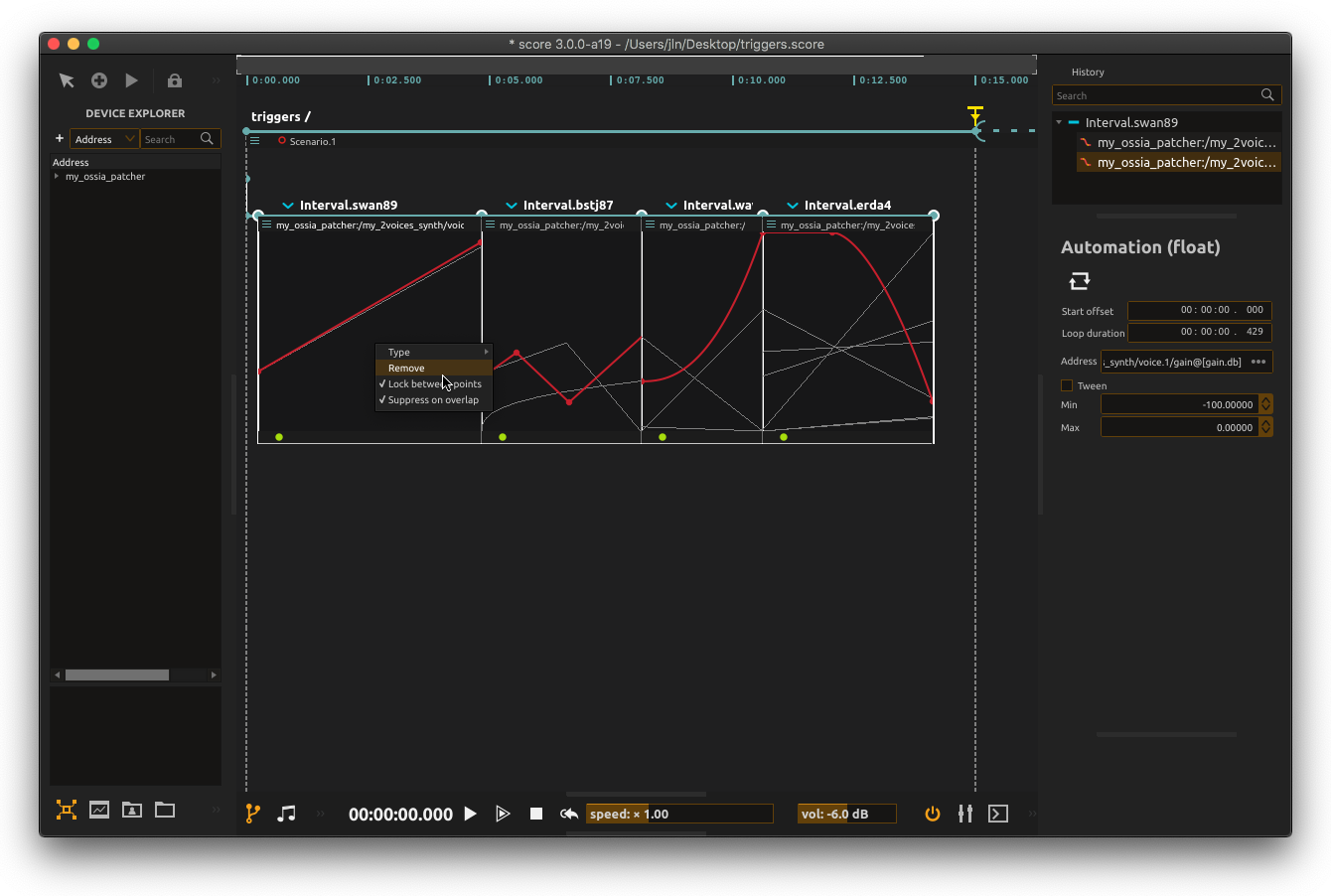States & automations in practice
In previous sections of this quick start guide, we saw two elementary methods to write scenarios for your project: saving & recalling some device’s state as well as writing simple automations for its parameters. While elementary, these two very features still offer a lot of flexibility to author advanced scenarios for your creations project. This is made even more flexible given a handful of score’s practice-based workflow features. Rather than separating cue-like execution of messages toward your devices and time evolving processes such as automations, score offer a number of ways to easily mix two approaches in a unified workflow.
Sequence mode
Setting up auto-sequence mode
A workflow you might find useful is the auto-sequence mode. As of score 3, auto-sequence is an option that needs to be activated from the software preferences. To do so, bring up the Settings window.
In the Settings window, select the User interface tab then make sure the auto-sequence option is toggled.

Using auto-sequence
In previous sections, we saw how to drag parameters from the Device explorer to easily store your device’s state on the timeline as well as drag some processes (in this case automation). Auto-sequence kind of allows us to do both in one go.
In the example below, we will start by storing an initial state for our device. Then after making some changes to our device, rather than dropping the parameters from the Device explorer to the timeline again, we will instead use the blue + icon next to the state icon and drag the link to a later point in the timeline.
What’s happening here is twofold:
- storing a new state using that blue
+button will store the device’s state using the namespace selection defined in the previous stored state - using the
auto-sequenceoption, score will automatically create some automations for the parameter that changed between initial state and newly created state
You may also store a new state by dragging from the blue
+icon withoutauto-sequencemode activated. In that case, score will still use the previous namespace selection to store parameters values but no automation will get created for changed parameters.

Of course, once these automations get auto-magically created, you can still edit their behavior over time and make any pleasing changes to their curve. You may also remove an automation should you want not to include a parameter continuous change.
Note on multiple automations editing
In the example above, you can see multiple automation slots actually got superposed. You can bring to front any of the automations in background to edit it. To do so, click on the address bar at the top of the slot to open up the list of superposed parameters ‘automation. Select in the contextual menu the one to edit. Once to front (displayed in red), it can be edited.
When multiple automations are stacked, the frontmost one is drawn with a red line, while the ones behind are drawn with a greyed out line

You can also remove an automation from the stack by clicking on a slot background. Bring up the contextual menu using right-click and select remove.
